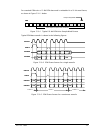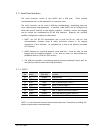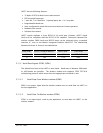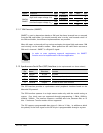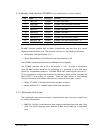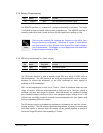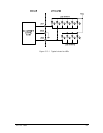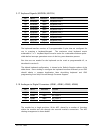
LZT 123 1836 60
Signal Parameter
Mode Min Typ Max Unit
1.8V 0.9xSIMVCC V
High level output voltage (V
OH
)
3.0V 0.9xSIMVCC V
1.8V 0.4 V
SIMCLK
SIMRST
Low level output voltage (V
OL
)
3.0V 0.4 V
5.11.7 SIM Detection (SIMDET)
SIMDET is used to determine whether a SIM card has been inserted into or removed
from the SIM card holder. You should normally wire it to the ‘card inserted switch’ of
the SIM card holder, but different implementations are possible.
When left open, an internal pull-up resistor maintains the signal high and means ‘SIM
card missing’ to the wireless modem. When pulled low the radio device assumes a
SIM card is inserted. SIMDET is a Digital IO signal.
In order to meet regulatory approval requirements, the SIMDET
function must be implemented in the host application.
5.12 Synchronous Serial Port (SSP) Interface [to be implemented in a future release]
Pin Name Direction Function
70 SSPCLK In/Out SPI clock
71 SSPFS In/Out SPI frame synchronization
72 SSPDTM Input SPI data to module from host
73 SSPDFM Output SPI data to host from module
The SSP interface provides a synchronous serial peripheral interface based on the
Motorola SPI protocol.
The SSPI interface operates in a single master mode only, with the module acting as
master. Four clock rates are supported through programming; 1.5MHz, 800kHz,
400kHz, 200kHz. The interface supports a variable word size, between 4bits to 16
bits. Continuous Transfer modes are not supported.
The SSP supports programmable data sizes of 4 bits to 16 bits, in addition to which
the polarity of the clock signal to the SPCLK pin is programmable through a register.
NOTE



